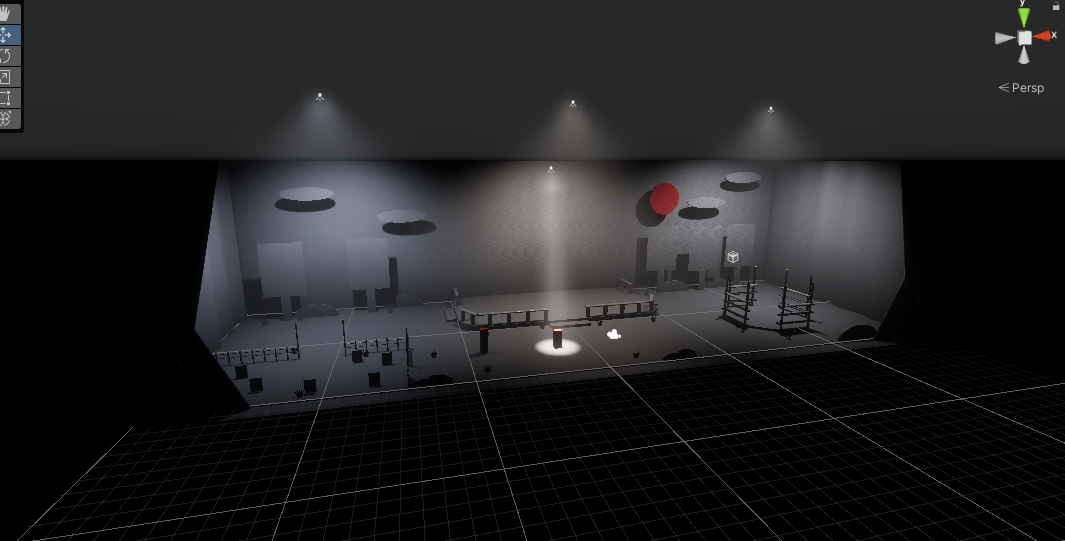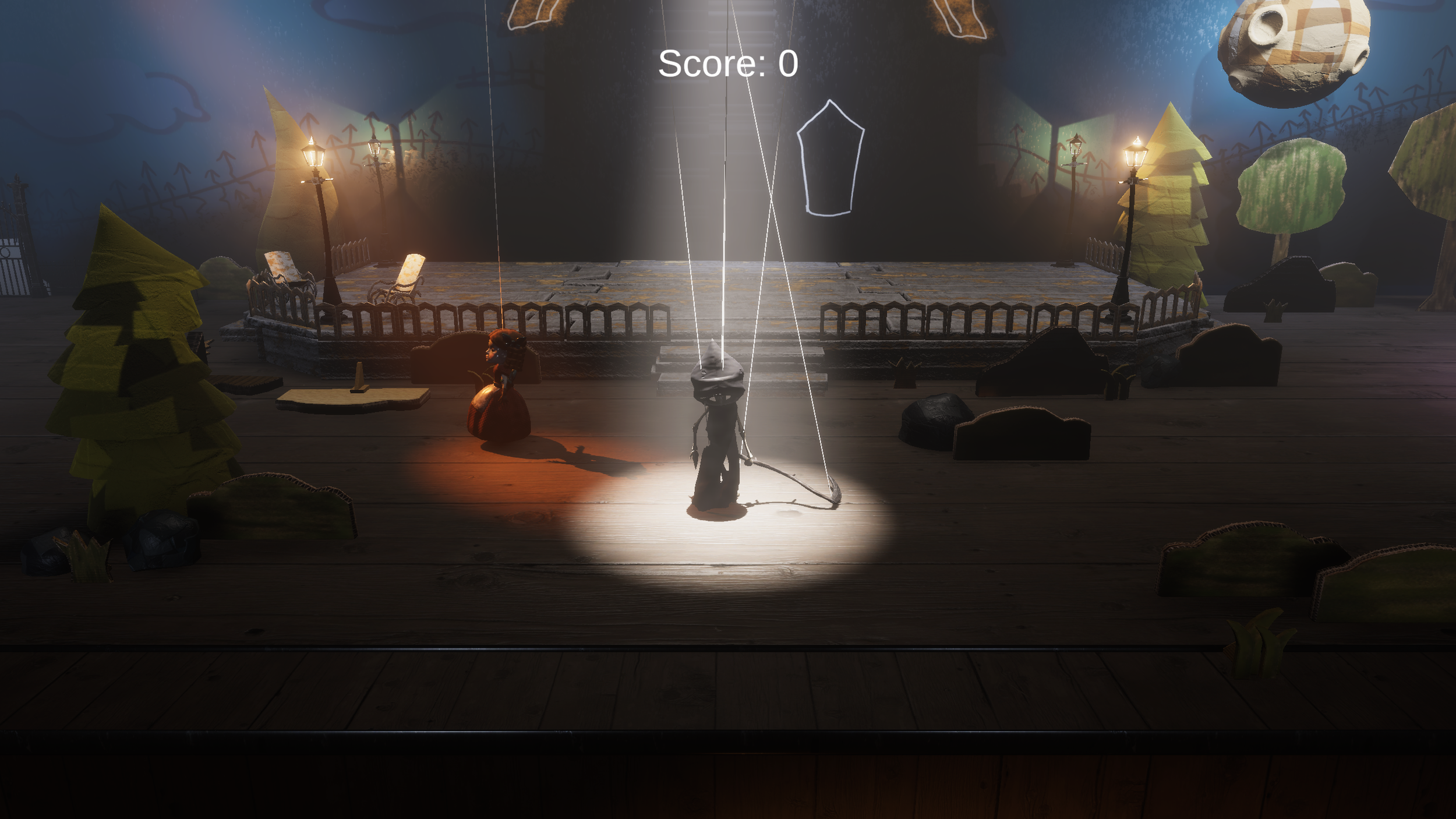The Amazing Puppet Show
As mentioned on the overview page for this production, we only had a week to create this first minigame at DADIU ‘22. Since we were also plagued by the production issues mentioned on the overview page for this game, it meant that we spent the first three days focusing on brainstorming the theme for the game, and the different elements in it.
I focused on pushing for the ideas I felt had the most potential out of the ones we generated, and then on creating a simple core loop that could allow us to expand if time allowed.
Why did it end up being a puppet show on the stage of a puppet theater? It allowed us to keep things contained. The team had more CG artists than any other role and by having the stage and no gameplay or cutscenes outside of that area, we could focus on populating the area with assets that looked like stage props visually and focus on creating an immersive setting.
From the initial planning on a whiteboard through greyboxing, we kept a focus on the planned elements of the background lore that would be produced. We drew heavily on inspiration from the Tim Burton style of story telling and visual language as this fit very well to our idea. Which meant the focus became on having a playful gothic style and placing our setting and characters in between the eerie and the whimsical.
Some of the issues we ran into were as follows:
Communication and pipeline. We had just been thrown together as a team the week before, so this meant hitting the ground running as this was also our first production as the full team.
With this short of a period of production time, cut shorter by the location issues, we had to rely on our own internal testing. This felt very daunting as even with two of us on the production having a deeper experience with games due to our age, it still felt like a hit or miss situation. We had to rely on what the production members considered to be the fun elements, in this case the weird controls, and lean heavily into making that feel entertaining.
Not giving the audio designer enough time. They did an amazing job, but they would have liked to be able to do more.
A few takeaways
Always be on the lookout for overscoping. Even with a production this focused and tight scheduled we still had a scope that initially was way too ambitious. Thankfully we quickly realized that the extended lore of the game would have to be cut.
With a strong coherent theme, even a game where the core is very simple can provide a rich experience to the player.
I’ve heard the phrase “chasing the fun” before. And this production certainly proved that right. The mix of the visual and auditory design with the weird and strange controls is a very strong and is something we took with us into the next productions.



